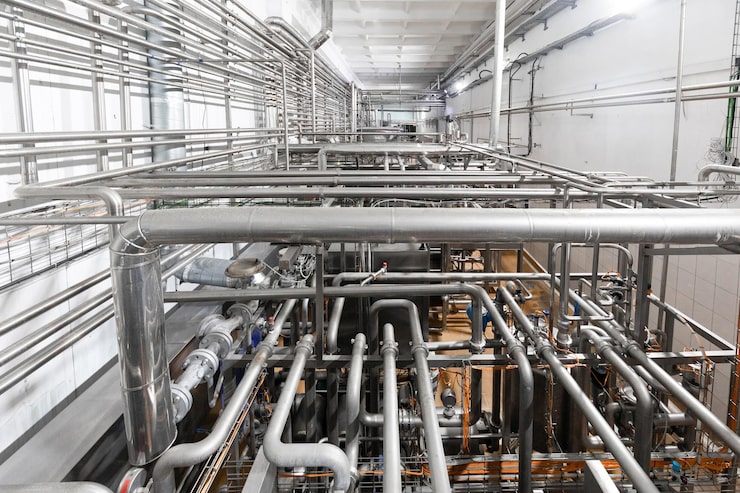The extrusion process is a manufacturing technique used to create objects with a fixed cross-sectional profile by forcing material through a specially designed die. This method is widely applied in industries such as plastics, metals, ceramics, and food production because it allows for continuous shaping of materials into complex forms with high precision. In the extrusion process, the raw material—whether it is in powder, pellet, or billet form—is heated to a workable state and then pushed or drawn through the die to form the desired shape. This approach ensures a consistent profile, making it ideal for producing pipes, sheets, rods, films, and various structural components. The extrusion process is valued for its efficiency, flexibility, and ability to work with a wide range of materials.
From a technical standpoint, the extrusion process begins with material preparation. For thermoplastics, raw polymer pellets are often dried to remove moisture before being fed into the extruder. In metal extrusion, billets are preheated to improve plasticity and reduce stress during forming. Proper preparation of the material is crucial because moisture, impurities, or inconsistent feed can lead to defects in the final product. In many industrial setups, automated feeding systems are used to maintain a steady and uniform material supply to the extruder.

The heart of the extrusion process lies in the extrusion equipment. The most common type is the screw extruder, which consists of a rotating screw inside a heated barrel. The screw conveys the material forward while simultaneously applying pressure and shear, which softens or melts it. In some cases, a ram or piston-type extruder is used, especially for brittle or powder-based materials like ceramics. For high-volume production, twin-screw extruders offer superior mixing capabilities and better control over processing conditions. The temperature zones along the barrel are carefully regulated to ensure that the material reaches the optimal viscosity for shaping.
Once the material reaches the correct temperature and consistency, it is forced through the die assembly. The die is a precision-engineered tool that defines the final cross-sectional geometry of the extrudate. Dies can be extremely complex, incorporating internal mandrels to create hollow sections or multi-channel designs for co-extrusion, where two or more materials are extruded together. The surface finish, dimensional accuracy, and mechanical properties of the final product depend heavily on die design and maintenance. In many manufacturing operations, dies are polished and treated to reduce wear and friction.
After emerging from the die, the extruded material undergoes cooling and solidification. Cooling methods vary depending on the material and application. In plastic extrusion, the product might be passed through a water bath or cooled with air jets. In metal extrusion, controlled cooling is essential to avoid internal stresses or unwanted microstructural changes. Some extrusions are immediately pulled through sizing devices or calibration tools to ensure dimensional stability. For certain applications, such as food extrusion, cooling also determines texture and appearance.
Post-processing is often an integral part of the extrusion process. Cutting, surface finishing, and quality inspection ensure that each piece meets specifications. For thermoplastics, secondary operations might include printing, embossing, or laminating. Metal extrusions might require machining, anodizing, or powder coating. In the case of high-precision components, advanced measurement systems are used to check tolerances in real time during production, reducing waste and ensuring consistency.
A significant advantage of the extrusion process is its material versatility. Thermoplastics such as PVC, PE, and ABS are common in pipe and profile extrusion. Metals like aluminum, copper, and magnesium can be extruded into lightweight yet strong structural parts. Ceramics and composites also benefit from extrusion, producing intricate shapes that would be difficult to achieve with casting or machining. In the food industry, extrusion enables the production of snacks, pasta, and textured protein products, allowing manufacturers to control shape, texture, and cooking properties.
From a business perspective, the extrusion process offers cost efficiency and scalability. Continuous production allows for high throughput with minimal labor intervention, and automation reduces errors. Because extrusion wastes little material compared to subtractive manufacturing, it is also more sustainable. This is particularly relevant in today’s market, where resource efficiency and environmental responsibility are key competitive advantages. Furthermore, extrusion lines can be quickly reconfigured to produce different profiles, making them suitable for both high-volume and custom production.
Quality control in extrusion is a sophisticated discipline. Operators monitor parameters such as temperature, pressure, screw speed, and material feed rate to ensure consistent output. Modern extrusion systems integrate sensors and control software to automatically adjust processing conditions in real time. This level of control is especially critical when producing parts for aerospace, automotive, or medical applications, where precision and reliability are paramount.
In advanced manufacturing, the extrusion process is also being integrated with innovative technologies such as 3D printing and additive manufacturing. Hybrid systems allow extruded materials to be deposited in complex patterns, combining the efficiency of extrusion with the design freedom of additive methods. Additionally, research into bio-based and recycled feedstocks is expanding the sustainability potential of extrusion.
Ultimately, understanding the extrusion process means recognizing its role as a core manufacturing method that bridges raw material preparation, precision engineering, and high-volume production. By mastering the variables that influence flow, temperature, and shaping, manufacturers can produce components that meet demanding functional and aesthetic requirements while maintaining cost and time efficiency.


